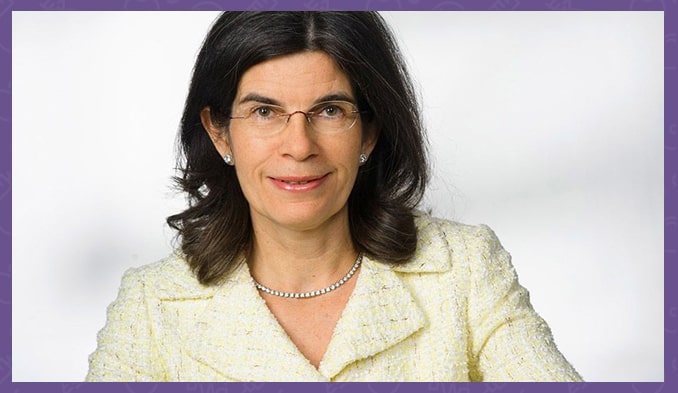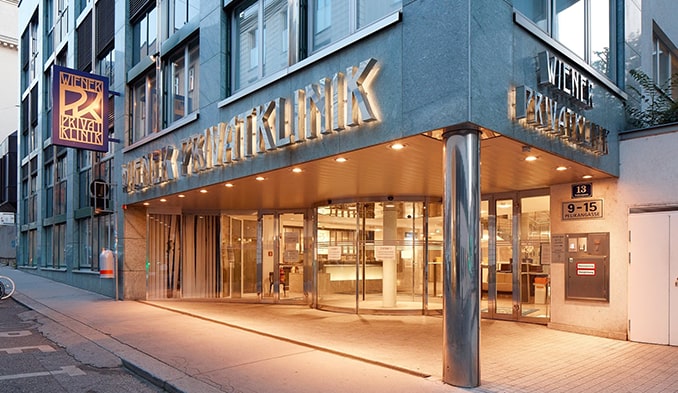Prof. Dr. Sabine Eichinger is a specialist in haemato-oncology and internal medicine at the Austrian hospital Wiener Privatklinik. She started working at the Department of Internal Medicine of the Medical University of Vienna in 1988, in the Division of Hematology and Haemastaseology, both in research and clinically. Twelve years later, she is now Associate Professor at the Medical University of Vienna, where she directs the Clinic of Anticoagulation. She focuses her research on the study of thrombosis. Prof. K. Eichinger led the world's largest Austrian cohort study to register risk factors for recurrent venous thromboembolism.
She is a member of numerous societies including:
- Austrian Society of Hematology and Oncology,
- Austrian Society of Internal Medicine,
- Austrian Society of Angiology,
- Society for the Study of Thrombosis and Haemostasis ,
- International Society on Thrombosis and Haemostasis,
- American Society of Hematology,
- European Association of Hematology.
How widespread is anemia?
Anaemia is widespread. It affects approximately 1/3 of the population worldwide.
What are the types of anemia?
There are 3 types of anemia - macrocytic (MCV > 100 fL), normocytic ( normochromic - MCV 80 to 100 fL) and microcytic (MCV <80 fL).
Macrocytic is manifested by vitamin B12 or folate deficiency. This anemia is a myelodysplastic syndrome. It can occur as a result of excessive alcohol consumption, liver disease, HIV infection and hypothyroidism. In turn, normocytic involves chronic renal failure, suppresses bone marrow and causes hemolysis. Iron deficiency and thalassemia are signs of microcytic anemia, which is a chronic disease.
Tell us more about aplastic anaemia, its symptoms and causes?
Aplastic anemia is a rare disease. For example, in the West an average of two people get the disease for every million people each year. It is a life-threatening form of bone marrow failure (local pancytopenia with hypoplasia or aplasia). Mortality is high in the absence of treatment.
Typical symptoms are:
- recurrent infections due to neutropenia,
- mucosal hemorrhage/menorrhagia caused by thrombocytopenia,
- fatigue
- cardiopulmonary findings (from progressive anemia).
Aplastic anemia is idiopathic in origin. Cancer treatment is one of the possible causes, and it is also an expected effect. It can also be caused by radiation and cytotoxic drugs, toxic chemicals, reaction to antibiotics, antiseptics and other drugs. Other possible causes include paroxysmal nocturnal hemoglobinuria, viral infections, immune system disorders, pregnancy, thymoma, anorexia nervosa.
Who is more likely to develop aplastic anemia?
Approximately 1:1 is the sex ratio in people with aplastic anemia. In the first 30 years of a person's life, half of the cases of aplastic anemia occur.
Share more about hemolytic anemia and its diagnosis?
It should be noted that it is fundamentally different from aplastic anemia. As a result of the premature destruction of circulating red blood cells, their viability decreases. It is because of this that haemolytic anaemia is defined as anaemia. If at diagnosis, бthe reticulocyte count is elevated without being directly related to recent bleeding, correction of iron deficiency or other nutrients, we may suspect haemolytic anaemia. Other signs include indications of erythrocyte destruction, including increased lactate dehydrogenase and bilirubin and decreased haptoglobin. Changes in the shape of RBCs in the peripheral blood smear may also be a sign at diagnosis..
What are the causes and consequences of haemolytic anaemia?
Causes may include autoimmune diseases, disseminated intravascular coagulation, congenital hemolytic anemias or those induced by drugs, clostridial sepsis, and hemolysis associated with blood transfusion. Mechanical hemolysis caused by marching, bong beating, aortic stenosis, or heart valve prosthesis is also among the possible causes. Others include paroxysmal nocturnal hemoglobinuria, osmotic lysis from hypotonic infusion, erythrocyte parasite, thrombotic microangiopathy, or snakebite. When anemia manifests, it can lead to cardiopulmonary problems, jaundice, fatigue, and last but not least, dark urine.
What tests will be needed to determine the type and causes of anemia?
A complete blood count is done to determine the type and causes of anemia. Haemoglobin, haematocrit, CSF parameters, CSF differential, erythrocyte (RBC or CSF), leucocyte (WBC or WBC), platelet and reticulocyte counts are determined. An additional test for iron deficiency is performed to determine plasma iron levels, transferrin and ferritin saturation, and total iron-binding capacity (transferrin). In addition, testing for hemolysis is done - serum lactate dehydrogenase, vitamin B12, haptoglobin, folic acid levels. Bone marrow is also examined in the presence of abnormal cells in the circulation or pancytopenia.
Are there differences in treatment according to the age of the patient?
The treatment of anaemia depends on the type of anaemia and not on age except in aplastic anaemia. In it, stem cell transplantation is not possible in the elderly.
What is advisable to eat in such cases?
People with anemia should stick to a healthy diet. It is good to eat vegetables and legumes as they are rich in vitamin B12 and folic acid. In addition, meat can be added to the diet so that the body can naturally replenish the required amount of iron.




